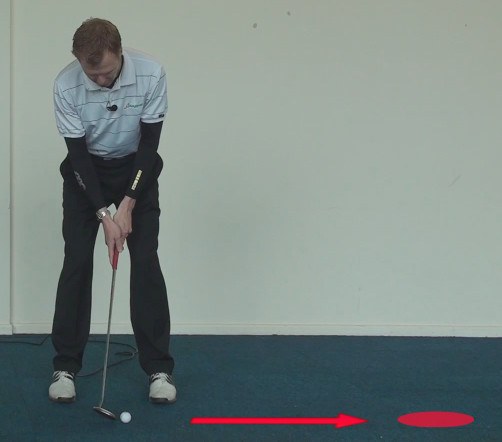
When faced with big-breaking putts, playing to a high spot on the green can be an effective strategy to navigate the break and give yourself a better chance at sinking the putt. Here's how to approach these putts:
- Assess the putt: Take some time to read the green and analyze the slope and the direction of the break. Identify the high point, or apex, of the break where the ball will start curving toward the hole.
- Select a target: Choose a spot on the high side of the break as your target. This spot should be slightly uphill from the hole, as this will help counteract the break and increase your chances of making the putt. Visualize the ball rolling over that spot and curving down toward the hole.
- Adjust your aim: Aim your putter face slightly to the low side of the break, accommodating for the break that will occur as the ball approaches the target. This adjustment helps ensure that the ball starts on the high side and curves toward the hole.
- Assess the speed: Consider the speed at which you need to strike the ball to reach the high spot on the green. Big-breaking putts often require a little more pace to cover the extra distance and maintain the line. Take into account the slope and the overall distance to gauge the appropriate speed.
- Visualize the putt: Before addressing the ball, mentally rehearse the stroke and visualize the ball rolling along the intended line and reaching the high spot on the green. This visualization can help build confidence and improve your ability to execute the putt.
- Execute the stroke: Address the ball with your normal putting stance and grip. Make a smooth, controlled stroke, keeping the putter face square to the target line. Focus on hitting the ball solidly and rolling it toward the high spot with the desired speed.
- Monitor the break: As the ball starts to break toward the hole, pay attention to the speed and the amount of break it's experiencing. Adjust your aim and speed for subsequent putts based on the feedback you gather from the initial putt.
- Practice and adapt: Spend time practicing big-breaking putts on the practice green. Experiment with different lines, speeds, and target spots to get a better understanding of how the ball reacts to various breaks. This will help you develop a feel for reading and playing these putts effectively.
By playing to a high spot on big-breaking putts, you give yourself a better chance of managing the break and getting the ball closer to the hole. With practice and experience, you can improve your ability to read and execute these challenging putts, ultimately lowering your scores on the greens.
Greens with large slopes give many golfers nightmares, especially when the greens are running fast. Sometimes, putts as short as 3-5 feet can break six inches or more, while longer putts may curve several feet on their way to the hole.
In these situations, it’s always wise to play a little more break than you think necessary. Because the ball will begin rolling downhill once it reaches the break’s apex, it will move somewhat faster. Also, a putt that approaches from the high side – aka the “pro side” – has a better chance of toppling into the cup.
On putts across severe slopes, determine the high point of the break; in other words, the spot where the ball will begin rolling toward the hole. Identify something visible, such as a discolored grass patch or repaired pitch mark, on or near the high point and aim to roll the ball over it, with the proper speed to carry it to the hole.





